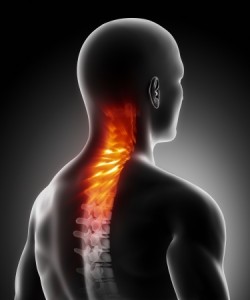Posture Analysis
 Your posture can tell a lot about your health and the way your muscles work together. Poor posture is one of the largest contributing factors to back and neck pain. Poor posture can also contribute to fatigue because of the stress it puts on your body. Posture analysis will help Dr. Mac analyze any posture problems and help him prescribe the proper treatment to correct them.
Your posture can tell a lot about your health and the way your muscles work together. Poor posture is one of the largest contributing factors to back and neck pain. Poor posture can also contribute to fatigue because of the stress it puts on your body. Posture analysis will help Dr. Mac analyze any posture problems and help him prescribe the proper treatment to correct them.
Poor posture can be caused by many things. The four main factors are repetitive activities, trauma, structural factors, and postural habits. Extreme examples of repetitive activities which may cause poor posture are weightlifters. Many weightlifters ignore the muscle groups they cannot see thereby developing rounded shoulders, flattened backs, and a type of “gorilla” posture. Another example is a sedentary lifestyle. While sitting for extended periods of time the muscles shorten and can cause poor posture.
An example of poor postural habits is slouching. Many people slouch unconsciously and develop poor posture. Trauma to a certain part of your body can affect your posture. Pain and discomfort may make you favor the area of your body which was not injured to avoid pain and discomfort and affect your posture. Structural factors such as uneven leg length can have a profound effect on your posture.
There are many treatments available for poor posture. Once Dr. Mac performs posture analysis he can pinpoint the causes of poor posture and formulate a treatment method for you. Treatment may include the following:
- Postural education and training
- Soft tissue massage and manual therapy
- Postural taping
- Corrective exercises aimed at improving flexibility
- Advice on activity modification
- Pilates
- Yoga
- Joint mobilization
Posture analysis is done by observing your posture and gait, through measurements, and other techniques used by Dr. Mac. Once he has analyzed your posture he will make recommendations on steps to correct your posture and help you feel and look better
Forward Head Posture
Forward head posture is a common condition of the anterior positioning of the cervical spine. As the name implies the head is pushed forward while standing or sitting. It is also known as Scholar’s neck or Reading Neck. Forward head posture can be caused by several things which include sleeping with the head too high, lack of developed back muscle strength, extended use of cellphones and computers, and a lack of nutrients particularly calcium.
Forward head posture can cause several negative effects. Burning pain between the shoulder blades, tingling of the arms, and numbness of the arms are a few of the negative effects from this type of posture. Others include improper breathing and pinched nerves. One of the reasons it can cause such problems is that for every inch your head moves forward it puts up to 10 pounds of pressure on your neck and back. In normal posture the ears line up with the center of your spine. In severe case of forward head posture more than 40 pounds of pressure may be exerted on the neck and back structures.
Chin retractions or nose nods are done while lying on your back. Bring your chin toward your chest without bending your neck. Another exercise which will help correct forward head posture is shoulder blade squeezes. Sit in a straight chair and relax your shoulders and then squeeze them together like you are trying to touch your shoulder blades. These are just two examples of exercises used to strengthen your back and neck muscles.
Forward head posture can be treated with proper diagnosis. Dr. Mac will analyze your posture and identify if you have this type of posture and recommend treatment to help fix it. Many times this type of posture can be corrected with exercise. By strengthening the neck and back muscles posture may be corrected.
